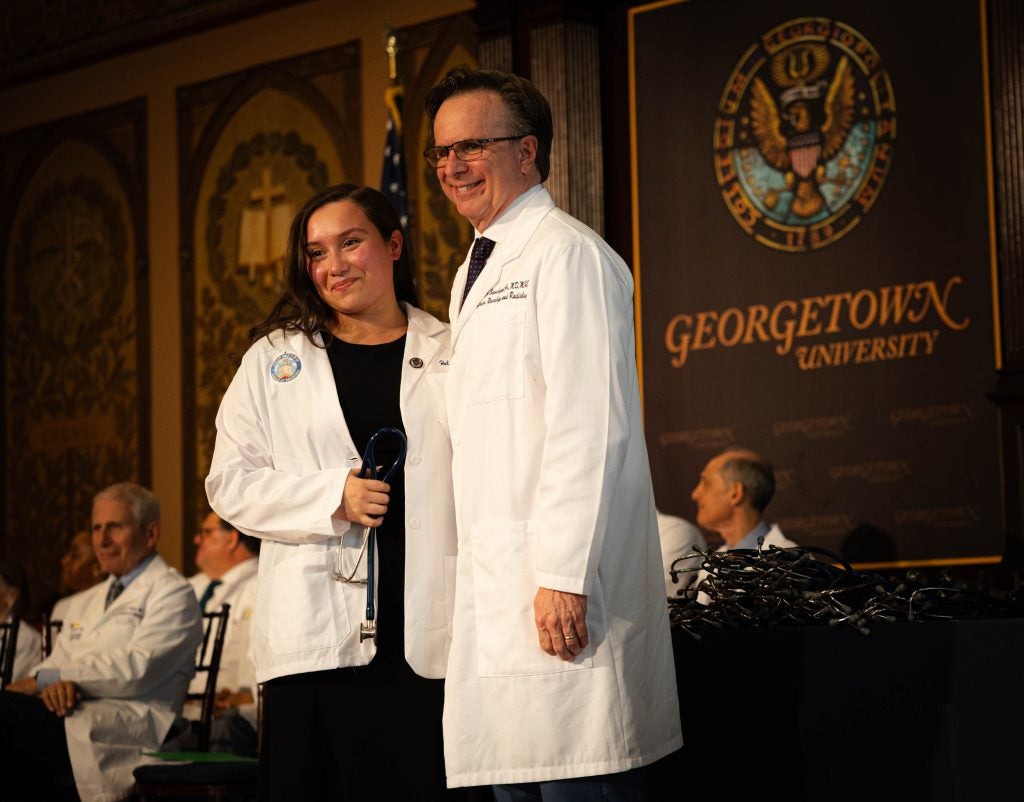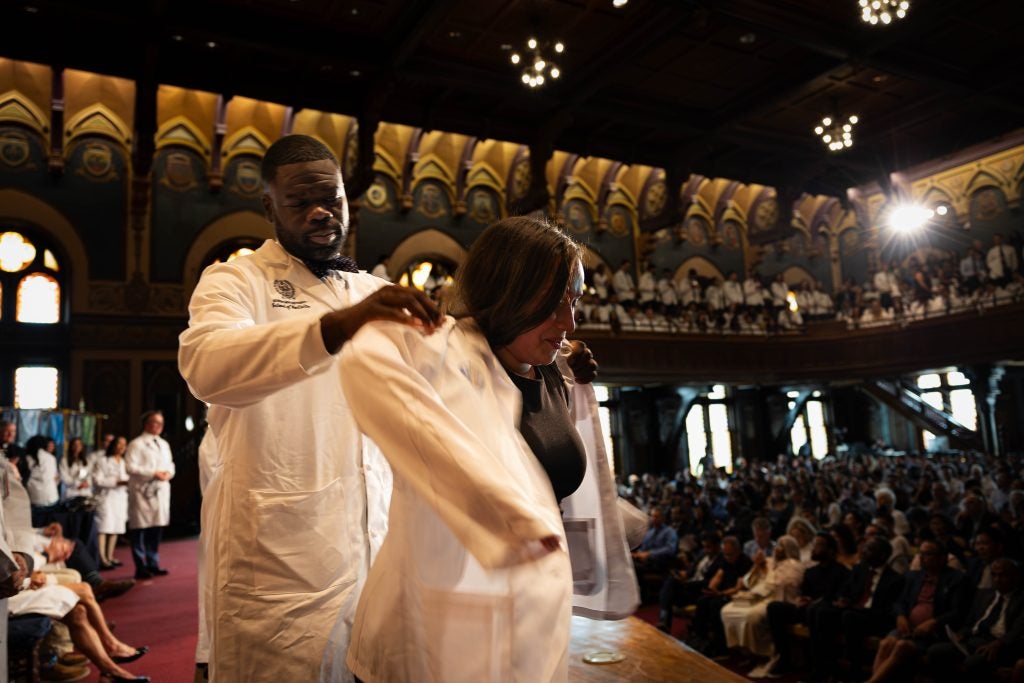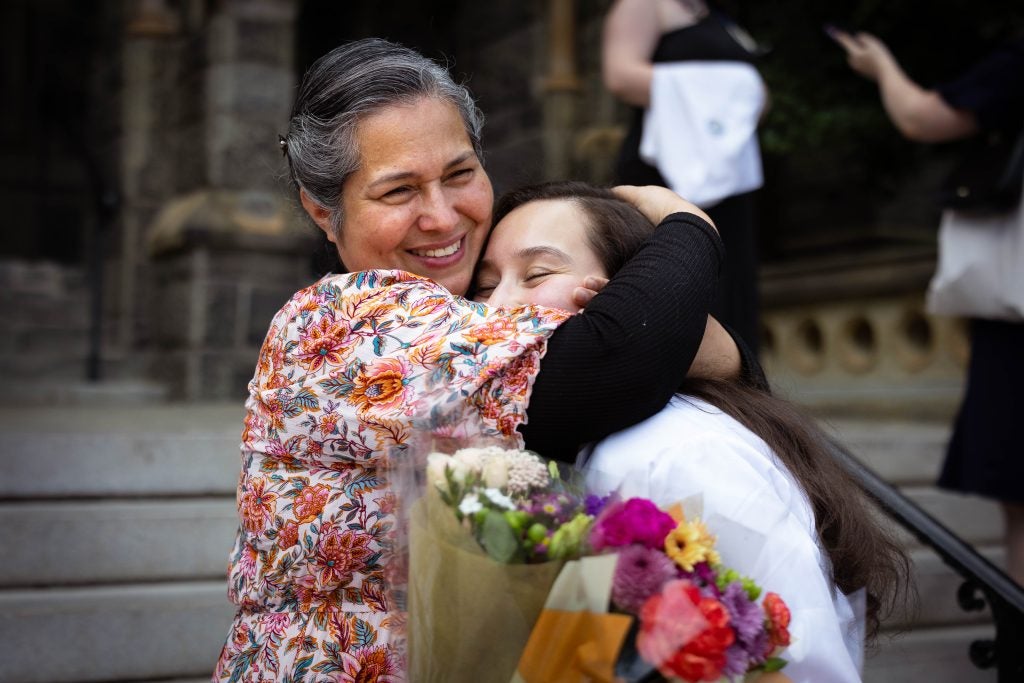In August, medical students walked across Gaston Hall’s stage in front of their loved ones wearing newly donned white coats. The annual White Coat Ceremony marked the official beginning of their medical profession and their journey to becoming physicians.
Among the 203 students receiving their white coats was Halyn Orellana (NHS’22, M’29), a first-generation college graduate and double Hoya who is the first in her family to attend medical school.
In this first-person narrative, she shares her journey of pursuing her calling to become a physician despite barriers, entering Georgetown’s GEMS program and the School of Medicine, and the path she wants to carve ahead.
***
When I was younger, I just wanted to make people happy. My first dream job was to have an ice cream truck and make children happy.
When I started getting older, I witnessed a lot of illnesses in my family and in myself. My mom had liver cirrhosis, and my aunt had lupus. I had a lot of tummy issues. I was always in pain. I would go to the hospital, and they wouldn’t know what was wrong with me. That sparked a curiosity of what’s going on with our bodies and why are we sick?
My doctor was in a medically underserved area. She was treating kids, and I wanted to be like her. That, along with everything going on at home, I was like, I want to do this. I want to be a physician.
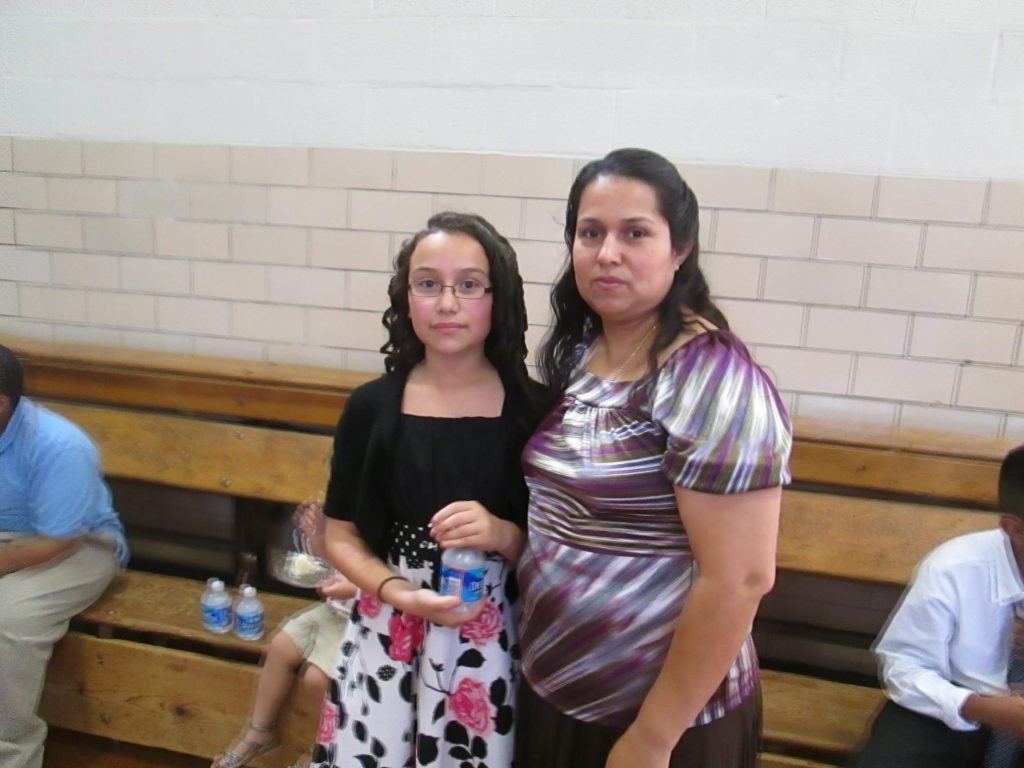
***
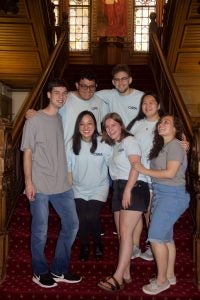
My first year at Georgetown was quite difficult. As a first-generation college student, high school graduate and the first person in my family to leave home because of school, I had no idea what to expect. It was a culture shock. It was difficult, but I quickly changed my mindset to be, this is a place where you’re going to grow and learn and experience new things.
I immersed myself in the DC community with volunteer groups. I would go to clinics in Montgomery County [that care for] people who were uninsured, low-income. I gained not only a deeper understanding of the social determinants of health in Washington, DC, but a passion for helping the upcoming generation of future healthcare professionals.
I also worked with Dr. Alejandra Hurtado de Mendoza in the Lombardi Comprehensive Cancer Center. We did translational research to improve genetic counseling and testing uptake in Latino women at risk for hereditary breast and ovarian cancer. That helped cement that what I do for patients is not in vain. There are patients who need people like me in medicine, who need my cultural background and my Spanish-speaking skills.
***
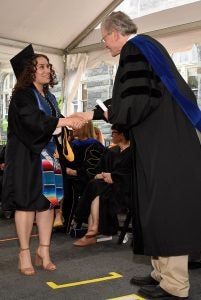
My sophomore year, the pandemic happened. A lot of students went back home.
There was a period of time when I was homeless, going from couch to couch. I had to stay with family members wherever I could fit. In the daytime, there were chores and cooking and kids running around yelling. I got another part-time job at a flower nursery because we needed another stream of income. I was studying at night and repeating that every single day. It was tough.
I’m grateful that Georgetown provided housing stability at the beginning of my junior year, which allowed me to focus on my studies.
Plan A was to become a physician as soon as possible [after graduation]. But with everything going on, I knew I couldn’t add an additional pressure to study for the MCAT and do my senior thesis.
***
[After graduation] I became a post-bacc at the National Institutes of Health. During those two years, I tried to study for the MCAT. As a first-gen student, I did not know what I was doing. I did not score well. I got below 500. I knew I wasn’t competitive, and I got rejected by all the schools I applied to.
I was embarrassed. I was ashamed. My family looked up to me. They were like, ‘You’re going to pass the MCAT; you’re going to do so well!’ It felt like I had failed them in a way. And I had failed myself.
I had such high standards for myself, and not being able to meet those standards because I didn’t have the money to pay for an MCAT course, or I didn’t have the time because I was caregiving or I was helping my mom with something … always at the back of my mind was, if I had just tried a little harder. I beat myself up about it.
Getting into GEMS, I was able to change that mindset.
***

GEMS is a one-year academic enrichment program where they teach you how to learn to handle medical school. It’s very intense.
I took in everything — the test-taking strategies, the help with the biomedical sciences, the help with critical thinking — and I started changing the way that I thought.
***
I was having breakfast when the [Georgetown School of Medicine] admissions decisions came out. I opened [the email] over my scrambled eggs and bacon, and it was a dream come true. I was a little shocked.
I had been like, even if I don’t get in, I am proud of myself. I know I’m going to be a physician one day. I know I can do it. I know that if I need to take the MCAT again, I can excel. That was where I was at because the program had taught me so much.
But after learning of my acceptance, I was relieved. I could breathe. There was a huge weight lifted off my shoulders. I was very excited.
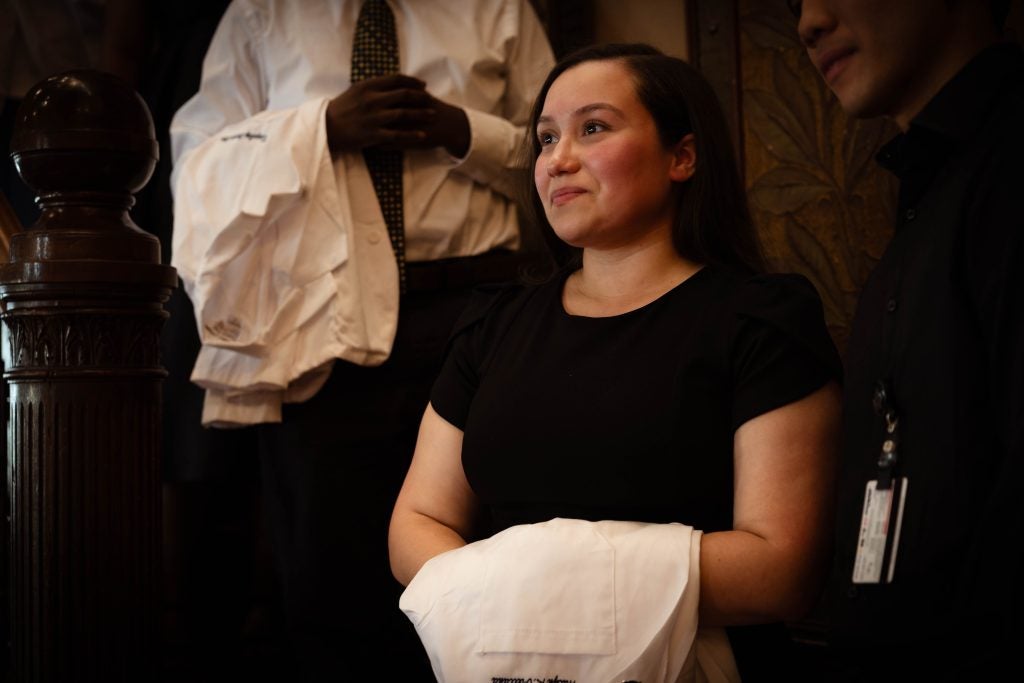
***
[Before I was coated], every single moment that got me to that point played back in my head. Especially my GEMS year, which was very difficult. I felt emotional and proud of myself and how far I’ve gotten.
The white coat represents not only my step into medicine and the journey that I’ve taken, but it’s a symbol of my sacrifices, my family’s sacrifices, our faith, and a reminder that all the effort, all the years — the plan A, the plan B, the plan C, the plan D — all of that wasn’t in vain, and I belong here. I belong here. Even though these spaces years ago weren’t built for people like me, it’s where I belong now, and I am determined to make space for others just like me in this room.

